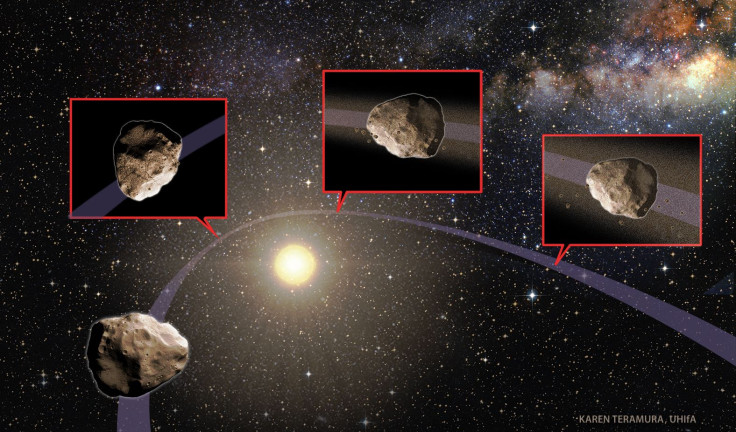Near-Earth Asteroids Die Much Before They Reach The Sun, Study Reveals

A team of researchers studying the properties of nearly 9,000 Near-Earth Objects (NEO) has finally gleaned enough information about the final moments of these asteroids.
Until now, astronomers believed these NEOs — originating in the donut-shaped asteroid belt between the orbits of Mars and Jupiter — ended their existence when they plunged into the Sun. However, the latest study, which originally set out to construct a state-of-the-art model of the NEO population — which could threaten future deep space missions — revealed that these asteroids actually die a slow, lingering death much farther from the Sun than previously thought.
In a statement released Wednesday, Mikael Granvik, a research scientist at the University of Helsinki and lead author of the study published in the journal Nature, said that discovery of the “catastrophic loss” of asteroids before a collision with the Sun allows scientists to understand a variety of recent observations from a new perspective.
“Perhaps the most intriguing outcome of this study is that it is now possible to test models of asteroid interiors simply by keeping track of their orbits and sizes. This is truly remarkable and was completely unexpected when we first started constructing the new NEO model,” Granvik said.
An asteroid is classified as an NEO when its distance from the Sun during its nearest approach is less than 1.3 times the average Earth-Sun distance.
In order to build the model, the researcher studied the properties of thousands of NEOs. In the process, they observed an anomaly. The model predicted the existence of almost 10 times more objects on orbits that approach the Sun to within 10 solar diameters than the researchers actually observed.
After spending a year poring over the results and ruling out mistakes in their calculations, the researchers concluded that the problem was not in their analysis but in their assumptions of “how the solar system works.”
The missing NEOs were actually being destroyed in a drawn out, long and hot fizzle as they got close to the Sun, but long before they actually fell into our star.
“The discovery that asteroids must be breaking up when they approach too close to the Sun was surprising and that's why we spent so much time verifying our calculations,” Robert Jedicke, a researcher at the University of Hawaii’s Institute for Astronomy, said, in the statement.
The team’s discovery also helps explain several other discrepancies between observations and predictions about the distribution of small objects in the solar system. For instance, it explains why scientists have been unable to match most meteors — tiny bits of dust and rock, dislodged from the surfaces of asteroids and comets, which end their lives burning up as they enter our atmosphere — with any known NEO. This study suggests that the parent objects were completely destroyed when they came too close to the Sun — leaving behind streams of meteors but no parent NEOs.
The findings also suggest that dark asteroids — which don’t reflect as much light — vanish father away from the Sun than brighter ones because they are more easily destroyed.
© Copyright IBTimes 2024. All rights reserved.





















